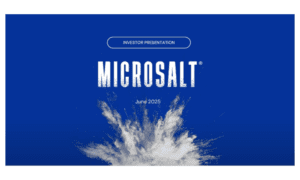Cutting down on salt involves a lot more than just putting away that shaker.
Key takeaways:
- Maintaining a low-sodium diet doesn’t mean that you have to eat bland, tasteless food
- There are many delicious low-sodium alternatives to salty foods and condiments
- There is no one-size-fits-all low-sodium diet that’s “right” for everyone
Maybe your doctor prescribed a low-sodium diet. Or maybe it’s just part of your personal health strategy. Either way, there’s a lot to learn about which foods and drinks can help you stick safely to your nutritional goals – and which ones will hamper your progress.
It’s also very important to learn how to read nutritional labels and familiarize yourself with low-sodium terminology and generally recommended numbers. Here’s what you need to know to eat sodium smart.
A crash course in mealtime math
It’s essential to build your dietary strategy around some basic figures. It’s generally recommended that adults consume less than 2,300 mg of sodium a day. That’s roughly a teaspoon. And the American Heart Association (AHA) suggests an even lower daily number of 1,500 mg (about half the weight of a penny). Most of us far exceed both figures, with the average American consuming 3.400 mg of sodium every day.
When planning your diet, you should review these general recommendations with your doctor, who can help you determine your ideal daily sodium intake based on other factors like your current fitness level, medical conditions, and prescriptions. Once you and your doctor have calculated your personalized sodium limit, you can confidently choose foods that will help you remain in the safe zone while enjoying a varied, flavorful menu, like the DASH diet.
Gender is another factor in determining your ideal sodium levels. In general, women have a higher degree of salt sensitivity than men. And this sensitivity increases after menopause, which may be due to lower estrogen levels. Therefore, some medical professionals suggest that women follow the AHA’s recommended sodium intake number to keep their sodium intake as low as possible.
Men have their own built-in sodium concerns since they have higher blood pressure on average compared to women, especially during their younger years. They also tend to have a higher daily salt intake, making it vital to be vigilant.
Now that we have the math out of the way, the next lesson is learning how to read – between the lines of food labels, that is.
What food labels really mean
Phrases like “no salt added” and “reduced sodium” aren’t always what they seem! Luckily, x-ray vision is a sodium superpower that anyone can develop to see what’s underneath the terms on their food labels. Here’s what you need to know:
- Sodium free – Not exactly. “Sodium free” actually means that food contains less than 5 mg of sodium.
- Sodium light/Light in sodium – May contain 50 percent less sodium than comparable products.
- Reduced sodium – This can be a variable figure. Sometimes it simply refers to a product having less sodium than competing products, while at others it can indicate a 25 percent sodium reduction compared to similar choices.
- Low sodium – Less than 140 mg (about the weight of five grains of rice) of sodium.
- No salt added – This doesn’t mean “no salt present!” The food itself will contain some degree of sodium, and so might other ingredients in the recipe.
Once you understand how to decode these terms, you can make better decisions about adding (or avoiding) products to your low-sodium diet. To make those choices even easier, let’s spotlight some of your best friends and greatest enemies at the grocery store.
Low-sodium winners and losers
Successful dietary choices come from learning how to differentiate healthy staples and alternatives from the usual salty suspects that contribute to excess sodium intake. For example, many herbs and spices can step in for salt to make food flavorful and exciting. Some popular alternatives include:
- Mint
- Pepper
- Rosemary
- Nutmeg
- Paprika
Also, choose fresh and frozen foods over processed ones wherever possible. Basically, you’re looking for dietary options as close to an unaltered, additive-free state as possible. Some of the most sodium-heavy foods to avoid (or at least scrutinize as part of your diet) include:
- Pizza
- Canned soups
- Breads and sandwiches
- Cured meats and cold cuts
- Potato chips, pretzels, and popcorn
- Fast food
Instead, fresh fruits and vegetables should be your go-tos for sides and snacks. And meatier fare like seafood and chicken can bulk out a healthy plate – just be sure to keep tabs on their natural sodium content.
Something many people forget to check is the sodium content of their drinks. Sodas and sports drinks often have more than their fair share of the stuff. And milk can also be a sneaky source of excess sodium, as can other dairy products such as cheese and yogurt.
Water, of course, is always your best bet for a low-sodium beverage – and for good health in general. Pure fruit juices are a decent second choice – just watch out for that natural sugar!
It may sound like a lot to keep up with, but following a low sodium diet does get easier over time. And the good news is that you can make it even easier by replacing the salt in your diet with…salt. Yes, you read that correctly. Here’s how.
MicroSalt® makes low-sodium living more satisfying
MicroSalt® makes low-sodium living a snap. Our patented microparticle is all-natural, real salt with no bitter aftertaste and no potassium chloride, which can have negative side effects for some people. Since it has only half the sodium of conventional salt, you can sprinkle MicroSalt® freely when cooking and eating and still reduce your sodium intake. Our MicroSalt® shakers deliver a taste explosion at mealtimes while our SaltMe®! Chips make excellent lower-sodium snacks.
Our innovation has won MicroSalt® multiple accolades, including the P&G Alumni Network’s 2021 Star Entrepreneur Award and the 2022 Sodium Reduction Technology Provider of the Year. Contact us today to find out about our low-sodium solutions for consumers and manufacturers. We’d love to tell you more about our mission.




